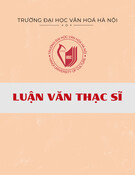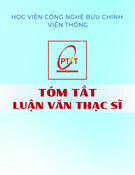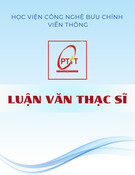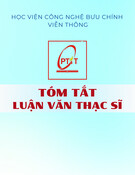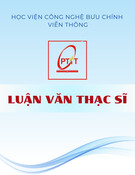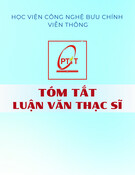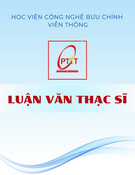
Annals of Mathematics
Ramification theory
for varieties over a perfect
field
By Kazuya Kato and Takeshi Saito

Annals of Mathematics,168 (2008), 33–96
Ramification theory
for varieties over a perfect field
By Kazuya Kato and Takeshi Saito
Abstract
For an ℓ-adic sheaf on a variety of arbitrary dimension over a perfect
field, we define the Swan class measuring the wild ramification as a 0-cycle
class supported on the ramification locus. We prove a Lefschetz trace formula
for open varieties and a generalization of the Grothendieck-Ogg-Shararevich
formula using the Swan class.
Let Fbe a perfect field and Ube a separated and smooth scheme of finite
type purely of dimension dover F. In this paper, we study ramification of a
finite ´etale scheme Vover Ualong the boundary, by introducing a map (0.1)
below.
We put CH0(V\V) = lim
←− CH0(Y\V) where Yruns compactifications of
Vand the transition maps are proper push-forwards (Definition 3.1.1). The
degree maps CH0(Y\V)→Zinduce a map deg : CH0(V\V)→Z. The fiber
product V×UVis smooth purely of dimension dand the diagonal ΔV:V→
V×UVis an open and closed immersion. Thus the complement V×UV\ΔVis
also smooth purely of dimension dand the Chow group CHd(V×UV\ΔV) is the
free abelian group generated by the classes of connected components of V×UV
not contained in ΔV.IfUis connected and if V→Uis a Galois covering, the
scheme V×UVis the disjoint union of the graphs Γσfor σ∈G= Gal(V/U)
and the group CHd(V×UV\ΔV) is identified with the free abelian group
generated by G−{1}.
The intersection of a connected component of V×UV\ΔVwith ΔV
is empty. However, we define the intersection product with the logarithmic
diagonal
(,ΔV)log :CH
d(V×UV\ΔV)−−−→ CH0(V\V)⊗
Z
Q
(0.1)
using log product and alteration (Theorem 3.2.3). The aim of this paper is to
show that the map (0.1) gives generalizations to an arbitrary dimension of the
classical invariants of wild ramification of f:V→U. The image of the map
is in fact supported on the wild ramification locus (Proposition 3.3.5.2). If we
have a strong form of resolution of singularities, we do not need ⊗
Z
Qto define

34 KAZUYA KATO AND TAKESHI SAITO
the map (0.1). We prove a Lefschetz trace formula for open varieties
2d
q=0
(−1)qTr(Γ∗:Hq
c(V¯
F,Qℓ)) = deg (Γ,ΔV)log
(0.2)
in Proposition 3.2.4. If V→Uis a Galois covering of smooth curves, the
log Lefschetz class (Γσ,ΔV)log for σ∈Gal(V/U)\{1}is an equivalent of the
classical Swan character (Lemma 3.4.7).
For a smooth ℓ-adic sheaf Fon Uwhere ℓis a prime number different from
the characteristic of F, we define the Swan class Sw(F)∈CH0(U\U)⊗
Z
Q
(Definition 4.2.8) also using the map (0.1). From the trace formula (0.2), we
deduce a formula
χc(U¯
F,F) = rank F·χc(U¯
F,Qℓ)−deg Sw(F)(0.3)
for the Euler characteristic χc(U¯
F,F)=2d
q=0(−1)qdim Hq
c(U¯
F,F) in Theo-
rem 4.2.9. If Uis a smooth curve, we have Sw(F)=x∈U\USwx(F)[x]by
Lemma 4.3.6. Thus the formula (0.3) is nothing other than the Grothendieck-
Ogg-Shafarevich formula [14], [26]. As a generalization of the Hasse-Arf the-
orem (Lemma 4.3.6), we state Conjecture 4.3.7 asserting that we do not need
⊗
Z
Qin the definition of the Swan class. We prove a part of Conjecture 4.3.7
in dimension 2 (Corollary 5.1.7.1).
The profound insight that the wild ramification gives rise to invariants as
0-cycle classes supported on the ramification locus is due to S. Bloch [4] and is
developed by one of the authors in [17], [18]. Since a covering ramifies along a
divisor in general, it is naturally expected that the invariants defined as 0-cycle
classes should be computable in terms of the ramification at the generic points
of irreducible components of the ramification divisor. For the log Lefschetz
class (Γσ,ΔV)log, we give such a formula (3.31) in Lemma 3.4.11. For the
Swan class of a sheaf of rank 1, we state Conjecture 5.1.1 in this direction
and prove it assuming dim U≤2 in Theorem 5.1.5. We expect that the log
filtration by ramification groups defined in [3] should enable us to compute the
Swan classes of sheaves of arbitrary rank.1
In a subsequent paper, we plan to study ramification of schemes over a
discrete valuation ring and prove an analogue of Grothendieck-Ogg-Shafarevich
formula for the Swan conductor of cohomology (cf. [1], [2]). In p-adic setting,
the relation between the Swan conductor and the irregularities are studied in
[6], [7], [23] and [33]. The relation between the Swan classes defined in this
paper and the characteristic varieties of D-modules defined in [5] should be
investigated.2
1Added in Proof. See T. Saito, Wild ramification and the characteristic cycle of an ℓ-adic
sheaf (preprint arXiv:0705.2799).
2Added in Proof. See T. Abe, Comparison between Swan conductors and characteristic
cycles (preprint).

RAMIFICATION THEORY FOR VARIETIES OVER A PERFECT FIELD 35
In Section 1, we recall a log product construction in [20]. In Section 2, we
prove a Lefschetz trace formula Theorem 2.3.4 for algebraic correspondences
on open varieties, under a certain assumption. In Section 3, we define and
study the map (0.1) and prove the trace formula (0.2) in Proposition 3.2.4. In
Section 4, we define the Swan class of an ℓ-adic sheaf and prove the formula
(0.3) in Theorem 4.2.9. In Section 5, we compare the Swan class in rank 1 case
with an invariant defined in [18]. We also compare the formula (0.3) with a
formula of Laumon in dimension 2.
Acknowledgement. The authors are grateful to Ahmed Abbes and the
referee for thorough reading and helpful comments. They thank Ahmed Abbes,
H´el`ene Esnault and Luc Illusie for stimulating discussions and their interests.
The authors are grateful to Shigeki Matsuda for pointing out that the assump-
tion of Theorem in [32] is too weak to deduce the conclusion. A corrected
assumption is given in Proposition 5.1.4. The authors are grateful to Bruno
Kahn for showing Lemma 3.1.5.
Contents
1. Log products
1.1. Log blow-up and log product
1.2. Admissible automorphisms
2. A Lefschetz trace formula for open varieties
2.1. Complements on cycle maps
2.2. Cohomology of the log self products
2.3. A Lefschetz trace formula for open varieties
3. Intersection product with the log diagonal and a trace formula
3.1. Chow group of 0-cycles on the boundary
3.2. Definition of the intersection product with the log diagonal
3.3. Properties of the intersection product with the log diagonal
3.4. Wild differents and log Lefschetz classes
4. Swan class and Euler characteristic of a sheaf
4.1. Swan character class
4.2. Swan class and Euler characteristic of a sheaf
4.3. Properties of Swan classes
5. Computations of Swan classes
5.1. Rank 1 case
5.2. Comparison with Laumon’s formula
Notation. In this paper, we fix a base field F. A scheme means a
separated scheme of finite type over Funless otherwise stated explicitly. For
schemes Xand Yover F, the fiber product over Fwill be denoted by X×Y.
The letter ℓdenotes a prime number invertible in F.

36 KAZUYA KATO AND TAKESHI SAITO
1. Log products
In Section 1.1, we introduce log products and establish elementary prop-
erties. In Section 1.2, we define and study admissible automorphisms.
1.1. Log blow-up and log product. We introduce log blow-ups and log
products with respect to families of Cartier divisors.
Definition 1.1.1. Let Fbe a field and let Xand Ybe separated schemes
of finite type over F. Let D=(Di)i∈Ibe a finite family of Cartier divisors of
Xand E=(Ei)i∈Ibe a finite family of Cartier divisors of Yindexed by the
same finite set I.
For i∈I, let (X×Y)′
i→X×Ybe the blow-up at Di×Ei⊂X×Y
and let (X×Y)∼
i⊂(X×Y)′
ibe the complement of the proper transforms of
Di×Yand X×Ei.
1. We define the log blow-up
p:(X×Y)′−−−→ X×Y,
(1.1)
more precisely denoted by ((X, D)×(Y, E))′, to be the fiber product
i∈IX×Y
(X×Y)′
i→X×Y
of (X×Y)′
i(i∈I) over X×Y.
2. Similarly, we define the log product
(X×Y)∼⊂(X×Y)′,(1.2)
or more precisely denoted by ((X, D)×(Y, E))∼, to be the fiber product
i∈IX×Y(X×Y)∼
i→X×Yof (X×Y)∼
i(i∈I) over X×Y.
3. If X=Yand D=E, we call (X×X)∼the log self product of Xwith
respect to D. By the universality of blow-up, the diagonal map Δ : X→X×X
induces an immersion
X→(X×X)∼
called the log diagonal map.
Locally on Xand Y, the log blow-up, log self-product and the log diagonal
maps are described as follows.
Lemma 1.1.2. Let the notation be as in Definition 1.1.1. Assume that
X=SpecAand Y=SpecBare affine and that the Cartier divisors Diare
defined by ti∈Aand Eiare defined by si∈Brespectively.
1. The log product (X×Y)′is the union of
Spec A⊗FB[Ui(i∈I1),V
j(j∈I2)]
(ti⊗1−Ui(1 ⊗si)(i∈I1),1⊗sj−Vj(tj⊗1) (j∈I2))
(1.3)
for decompositions I=I1∐I2.








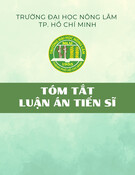





![Đề án Thạc sĩ: Tổ chức hoạt động văn hóa cho sinh viên Trường Cao đẳng Du lịch Hà Nội [Chuẩn nhất]](https://cdn.tailieu.vn/images/document/thumbnail/2025/20251202/kimphuong1001/135x160/91661764646353.jpg)


